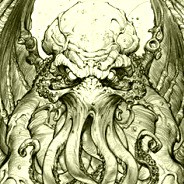Прочитайте и переведите текст письменно. Составьте 10 вопросительных предложений по тексту с ответами.
Например: What is law? Law is one of the most important things for modern people.
JURY
The jury is a historic legal institution in which a group of laymen participate in a major way in deciding cases brought to trial. Its exact characteristics and powers depend on the laws and practices of the countries, provinces, or states in which it is found, and there is a considerable variation. Basically, however, it recruits laymen at random from the widest population for the trial of a particular case and allows them to deliberate in secrecy, to reach a decision by other than majority vote, and to make it public without giving reasons.
As far as the history of the jury is concerned, its origin is lost in the past. It may have been indigenous to England or have been brought there by the Norman invaders in 1066. Originally, the jurors were neighbourhood witnesses, the ones who passed judgment based on what they themselves knew. But the breakdown of medieval society and the growth of the towns changed this; the jury was called upon to determine the facts of the case, based upon the evidence presented in court. The availability of the jury in the king's courts may have been a key factor in centralizing the nation's courts under the king and in creating the common law. By the 15th century, nonrational modes of trial such as ordeal, in which the defendant was subjected to various tortures that, if successfully endured, proved his innocence, were replaced by the jury trial, that became the established form of trial for both criminal cases and civil ones at common law.
Two forces moved the jury abroad. One was the expansion of the British Empire, that brought the jury to Asia, Africa and the American continent. The other one was the French Revolution and its aftermath, which brought it, as a symbol of popular government, to the European continent: first to France itself, then, through Napoleon, to the Rhineland, later to Belgium, most of the remaining German states, Austria, Hungary, Russia, Italy, Switzerland, Holland, and Luxembourg, although the last two abolished it immediately after Napoleon's defeat. In each of these countries, the use of the jury was from the outset limited to trials of major crimes and to those of political ones against the state.
Beginning in the mid-19th century, the jury was weakened in a variety of ways: in 1850, Prussia, for example, removed treason from its jurisdiction; in 1919, Hungary suspended jury trial entirely and never restored it. Germany abandoned the jury in 1924. The Soviet bloc abolished it outright; France never restored the jury abolished during the German occupation in the 1940s, and Japan did away with its short-lived jury courts in 1943. After World War II, Austria reintroduced the jury in a weakened form.
Thus, there are three important points about the historyand development of the jury as a legal institution: first, the effort to introduce it outside the Anglo-American legal orbit has failed; further, in England itself its use was limited by statute to a small category of cases; and, thus, the United States has emerged today as the home of the jury system for both criminal and civil cases. Some 120,000 jury trials are conducted there annually, more than 90 percent of all jury trials in the world.
One cannot help mentioning that the use of the jury in the United States depends on two factors: the degree to which it is available as a matter of right and the degree to which the parties themselves choose to use it. The laws as to its availability have varied from state to state, but in 1968 in Duncun v. Louisiana the United States Supreme Court declared that a jury trial was a constitutional right in all criminal cases in which the penalty may exceed that of six months' imprisonment. In civil cases its constitutional status is less clear, but, in general, jury trial is available. The practice of allowing the parties to waive a jury trial also varies widely from region to region, and, as a result, the number of jury trials per year also varies widely. The annual number of criminal jury trials per 100,000 population ranges between 3 for Connecticut to 144 for Georgia.
289
483
Ответы на вопрос:
Who is driving the car? who is cooking the food? who is helping me to cheat answers? who is winning the price?
Реши свою проблему, спроси otvet5GPT
-
Быстро
Мгновенный ответ на твой вопрос -
Точно
Бот обладает знаниями во всех сферах -
Бесплатно
Задай вопрос и получи ответ бесплатно

Популярно: Английский язык
-
Help me. как переводится это предложение. i have no idea - у меня...
 Вуди22813.07.2022 08:55
Вуди22813.07.2022 08:55 -
Напишите диалог между ветеринаром и клиентом с питомцем по : )...
 Vetvika3103.07.2022 11:49
Vetvika3103.07.2022 11:49 -
Раскройте скобки,употребляя глаголы в the present perfect tense...
 evabo0009.12.2022 12:32
evabo0009.12.2022 12:32 -
Определите в предложениях видовременные формы глаголов и укажите...
 ochvv15owqbd011.04.2021 23:30
ochvv15owqbd011.04.2021 23:30 -
Нужно описать человека , который у нас получился .it is a girl\...
 AlyonaAn23.05.2020 04:06
AlyonaAn23.05.2020 04:06 -
Употребите глагол из скобок в нужной форме (present indefinite/...
 egorfeklistov11.07.2022 20:23
egorfeklistov11.07.2022 20:23 -
Pojaluysta napishite sochinenie (things i afraid of)pleaseee...
 BobrovskayaVera123.02.2023 00:58
BobrovskayaVera123.02.2023 00:58 -
Have you ever seen this film? yes, i … . i … it when i was young....
 анютка678003.11.2022 03:08
анютка678003.11.2022 03:08 -
Я щяс на к.р.Мне нужно все кроме 4 задания....
 ben2924.01.2020 10:36
ben2924.01.2020 10:36 -
Use the information in the advert and the plan below to write a...
 vika208427.09.2020 08:22
vika208427.09.2020 08:22

Есть вопросы?
-
Как otvet5GPT работает?
otvet5GPT использует большую языковую модель вместе с базой данных GPT для обеспечения высококачественных образовательных результатов. otvet5GPT действует как доступный академический ресурс вне класса. -
Сколько это стоит?
Проект находиться на стадии тестирования и все услуги бесплатны. -
Могу ли я использовать otvet5GPT в школе?
Конечно! Нейросеть может помочь вам делать конспекты лекций, придумывать идеи в классе и многое другое! -
В чем отличия от ChatGPT?
otvet5GPT черпает академические источники из собственной базы данных и предназначен специально для студентов. otvet5GPT также адаптируется к вашему стилю письма, предоставляя ряд образовательных инструментов, предназначенных для улучшения обучения.
